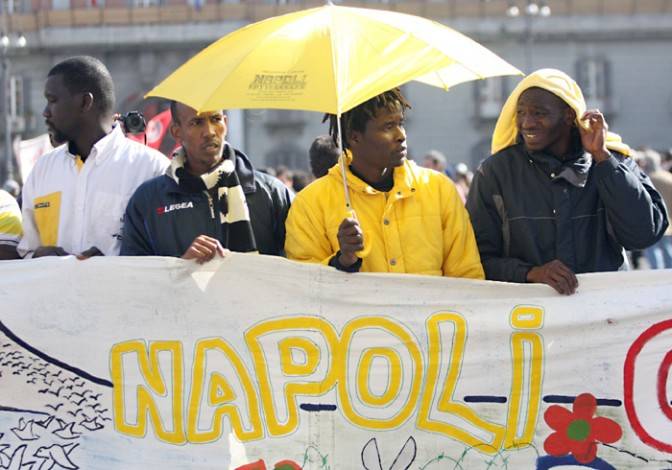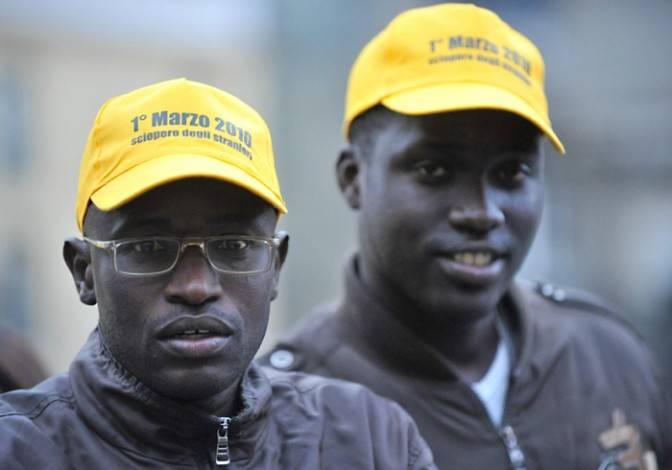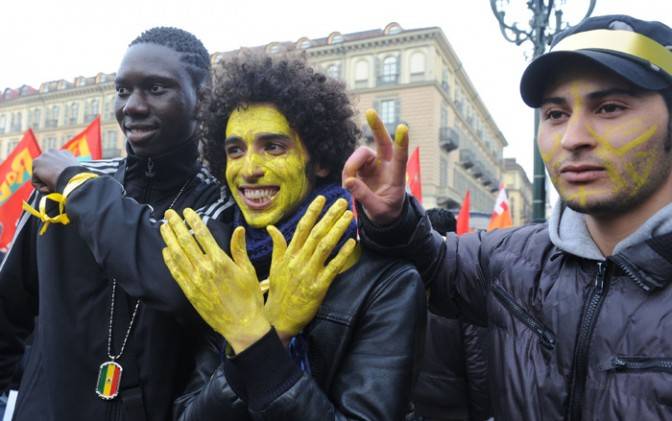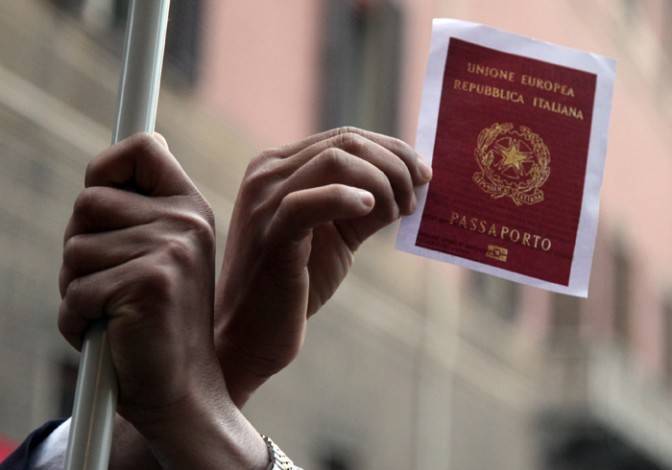The Yellow Revolution of Italian Immigrants
Yellow: a warm, happy, primary color, visible from afar, beyond the colors of race. Yellow is the color chosen by the Italian immigrants as a symbol of a revolutionary strike, a demonstration held on March 1st all over Italy.
“We are not criminals, we are not clandestine, we are citizens” was one of the main slogans shouted out in Rome as well as in Milan, Perugia, and Caserta, to name a few places. The immigrants in Italy, from all walks of life and from different countries, wanted to address the issue of racism, and reflect on the social and economic role of immigration today.
The strike consisted of 24 hours without any of the immigrants showing up to their jobs in order to signify the importance of those “foreigners” who live and work illegally in Italy and to prove how the country should better deal with the issue of integration.
The Director of the Chamber of Craftmanship, Lorenzo Tagliavanti told the daily Corriere della Sera that “we should reflect on the relationship between economy and immigration, since 9.5% of our Pil is directly or indirectly linked to immigration”. There are, in fact, almost 5 million citizens who were born in another country and now live in Italy.
This is why March 1st, 2010 might be remembered as a day centered on sustaining the importance of immigration on the socio-economic asset of the country in 60 Italian cities with thousands of people taking part in it and more than 50,000 joining the related Facebook Page. Immigration is a relatively new issue for Italy and the government has yet to find an effective way or a decisive plan with which to deal with racial controversies and to create a clearer set of rights and procedures on this matter. It looks as if, even when we are dealing with immigrants who successfully integrated, it issn't easy at all for them to enjoy their full legal status free of racist prejudices.
As recently as December 2009, a gunman entered a factory shooting two farm-workers in Rosarno, heavily injuring one of them, an immigrant from the Ivory Coast. This act was followed by a peaceful demonstration to demand a better treatment of immigrants at workplaces. In January 2010, a riot broke out still in Rosarno after another racist attack on immigrant workers. Cars and windows were broken, and people who wanted to kick the immigrants out of the town appeared on the scene with weapons. About 2000 immigrants, who tried to demonstrate but were partially blocked by the police, carried signs that defined Italians as racist and demanded a more humane society.
The Italian media have been filled in the past few years with stories concerning immigration and racism: the illegal arrivals on the Southern shores and the related sea-tragedies, the often sub-human conditions in the Immigration Centers, youth groups embracing racist slogans or symbols, the difficulties of getting a residence permit, and so on. The conservative, anti-immigrant Northern League Party declared that these tensions are a result of “too much tolerance towards clandestine immigration”.
The March 1st strike has been launched in Italy as well as in France, Spain and Greece. The participants to the demonstration were numerous (20,000 in Naples, for example) and marched together to oppose racism and to support the immigrants.
There were some significant demonstrative acts. In Rome, some university students placed a provocative banner in front of the Ministry of Education’s Building saying: “No access to white, rich, Italian students”. In Trieste, an initiative was promoted to cancel all the racist tags and writings on the walls of the city.
As some immigrants protested in Rome to have their own social security and retirement funds secured with better rights, others in Milan were ironically shouting: “No more Racism, we are the new citizens. We are the ones paying for your retirement”.
In Caserta, a video was shown by young activists where some bus drivers refused to stop or pretended to ignore certain bus stops if there were immigrants waiting.
Paradoxically, Italy has always been seen by many American and African-Americans as a place where race didn’t count as much as in the United States. In WWII, for instance, even if at that time Italians weren’t used to see many colored people, they distinguished themselves as being able to look beyond race. Nowadays, Italy is at a crossroad in dealing with immigration and the presence of foreigners at workplaces and in everyday life.
The growth of immigrants has brought the Italian society to a point where the need to foster a better understanding of the forces at play cannot be postponed. This is the goal of the “yellow revolution”, the strike on March 1st, when the demonstrators symbolically released tons of yellow balloons in the air, calling for racism and tensions to fly away with them.





































i-Italy
Facebook
Google+
This work may not be reproduced, in whole or in part, without prior written permission.
Questo lavoro non può essere riprodotto, in tutto o in parte, senza permesso scritto.